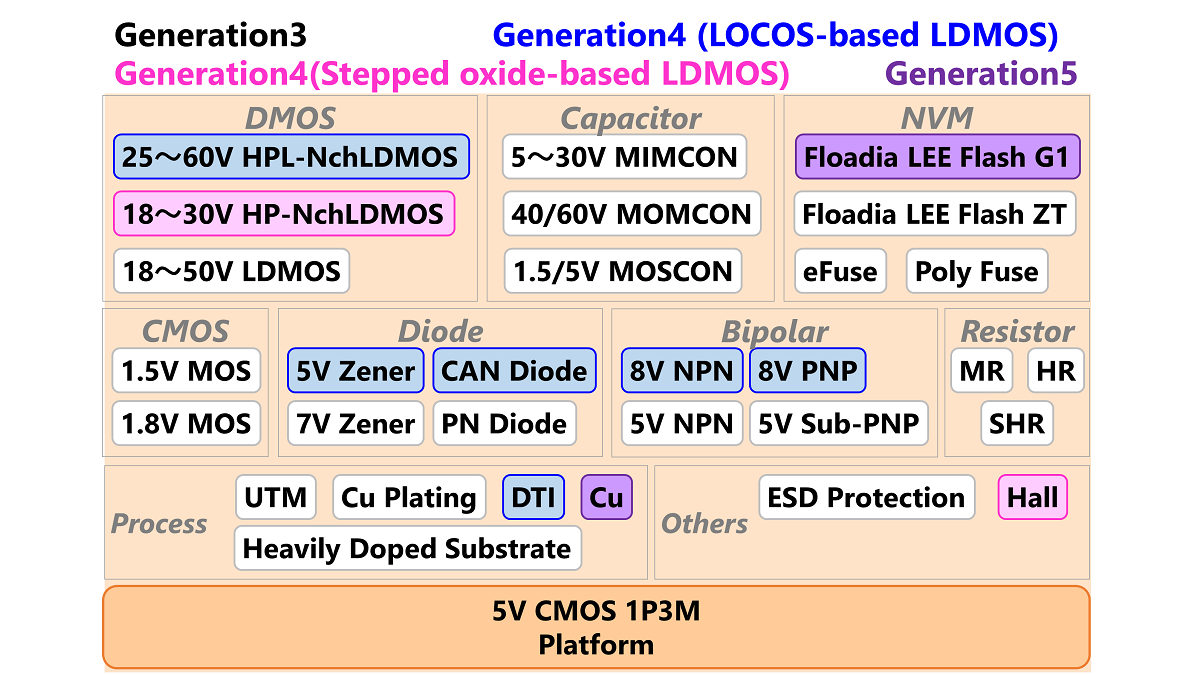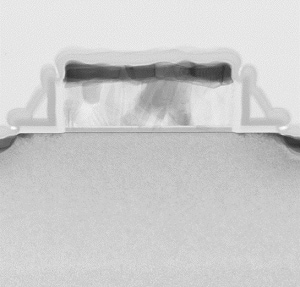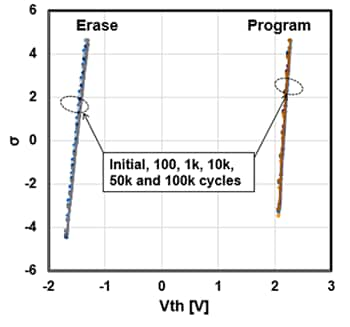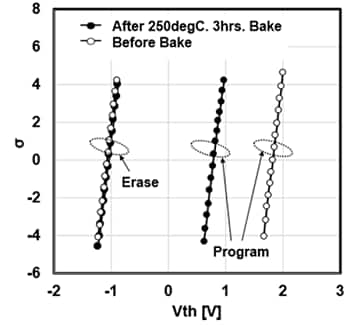Toshiba and Japan Semiconductor Develop Highly Reliable Versatile Analog Platform with Embedded Non-Volatile Memory for Automotive Applications
May 31, 2022
Toshiba Electronic Devices & Storage Corporation
Japan Semiconductor Corporation
KAWASAKI--Toshiba Electronic Devices & Storage Corporation (“Toshiba”) and Japan Semiconductor Corporation (“Japan Semiconductor”) have together developed a highly reliable and versatile analog platform with embedded non-volatile memory (eNVM) for automotive applications. The 0.13-micron generation analog platform, applied to analog integrated circuits (ICs), offers an optimized combination of processes and devices, according to rated voltage, performance, reliability and cost, for automotive analog circuits and eNVM on a single chip.
Analog ICs, including motor driver ICs, are used in a wide range of automotive applications. With the transition to electric vehicles and increase of vehicles with advanced driver assistance systems (ADAS), the analog IC market is expected to see continuous growth. This has created a requirement for a versatile, dedicated automotive platform that can meet a wide range of requirements related to automotive applications. As eNVM and a microcontroller unit (MCU) have not been realized on a single chip, the total IC area is large.
Toshiba and Japan Semiconductor offer three LDMOS*1 structures and a very wide device lineup, including eNVM, that are selectable to meet diverse requirements. Now they have developed a highly reliable platform for analog ICs that meets AEC-Q100/Grade-0, an international standard in automotive reliability.
There has been a trade-off between on-resistance (RonA), a key parameter for LDMOS, and breakdown voltage between drain and source (BVDSS). The lower the RonA, the better the performance with a constant BVDSS. Toshiba and Japan Semiconductor confirmed that two kinds of LDMOS, with stepped-oxide or LOCOS*2 located between the drain and source, have a maximum RonA that is 44%*3 better than STI*4-based LDMOS. They also determined mechanisms to evaluate the advantages of LOCOS-based LDMOS’s device reliability, failure rates and ESD tolerance.
eNVM from Floadia Corporation (Floadia LEE Flash G1) embedded in the platform is provided with only three additional masks. They can satisfy high-reliability requirements for automotive analog power devices without impacting on base platforms and devices. They also avoid mal-function in the eNVM by optimizing layout to protect it from the noise caused by switching LDMOS in the analog circuits.
Toshiba and Japan Semiconductor plan to start sampling automotive semiconductors with the newly developed platform in December 2022. Details of the achievement were reported at the IEEE International Symposium on Power Semiconductor Devices and ICs (ISPSD) 2022, an international conference held in Vancouver, Canada and online on May 22 to 25.
*1 LDMOS: Lateral Double Diffused MOS (Metal Oxide Semiconductor).
*2 LOCOS: LOCal Oxidation of Silicon. Utilize Silicon nitride film as a hard mask and selectively create a Silicon oxide film on Si substrate, and isolates elements.
*3 Toshiba and Japan Semiconductor confirmed that two kinds of LDMOS, with stepped-oxide or LOCOS located between the drain and source, have a maximum RonA that is 44% better than STI-based LDMOS, Toshiba test results.
*4 STI: Shallow Trench Isolation. Isolates elements by embedding insulator film into shallow trenches.
Device line-up of the developed platform

Structures of the three kinds of LDMOS structure

(From left is STI structure, Stepped-oxide structure, LOCOS structure)
Floadia's eNVM TEM image and the evaluation result of endurance test and data retention test (Toshiba test results)



* Company names, product names, and service names may be trademarks of their respective companies.
* Information in this document, including product prices and specifications, content of services and contact information, is current on the date of the announcement but is subject to change without prior notice.